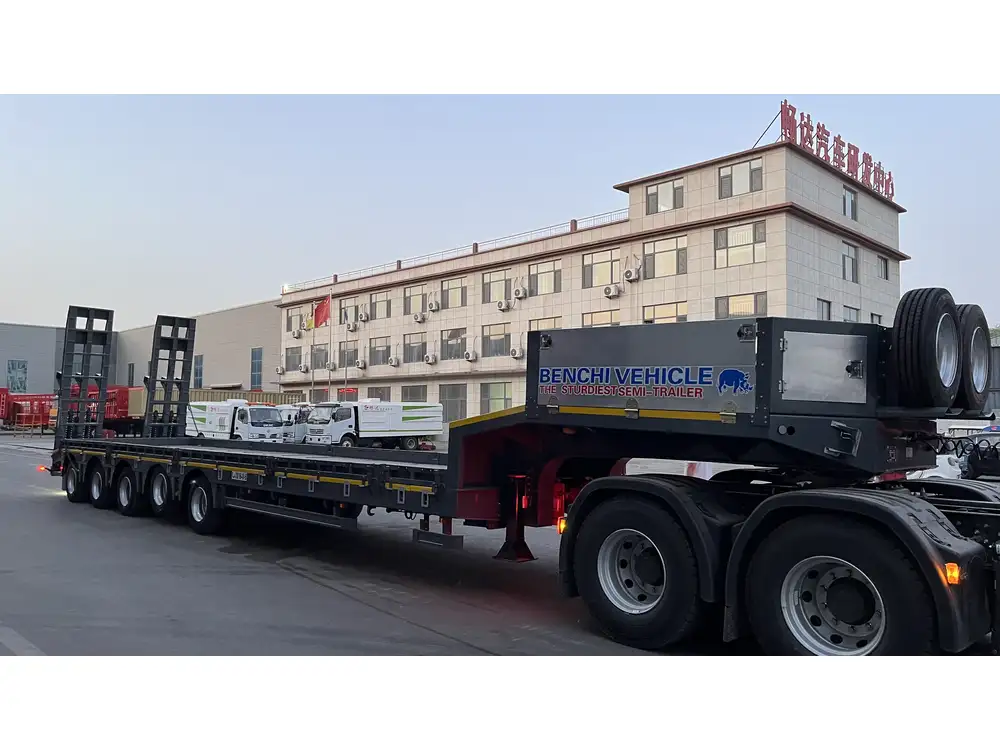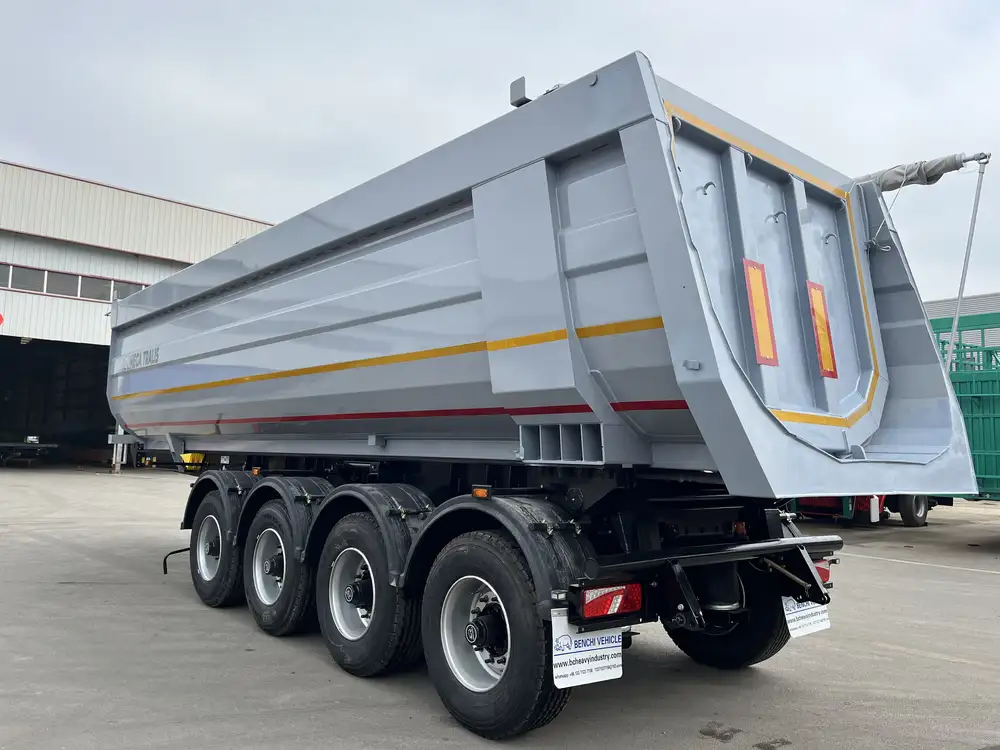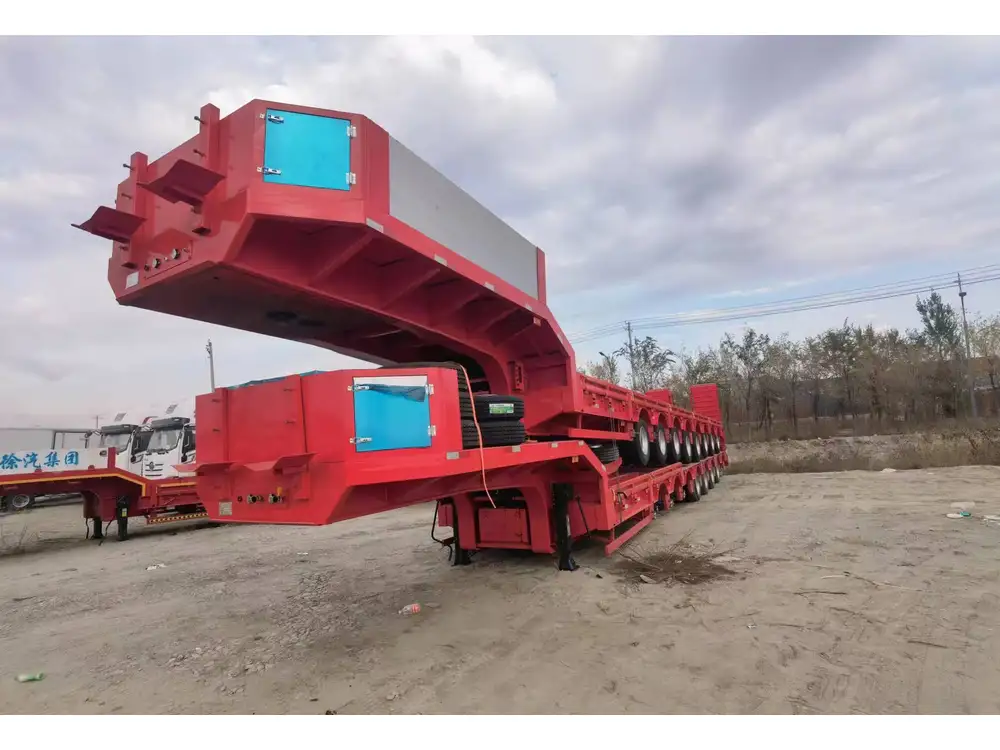When considering the purchase of a flatbed trailer, many factors come into play that can significantly influence the price point. The complexity of flatbed trailers is often overlooked, yet understanding the intricacies associated with their costs is crucial for potential buyers. This guide seeks to unpack these elements, enabling you to make an informed purchasing decision.
Understanding Flatbed Trailers
What is a Flatbed Trailer?
A flatbed trailer is a versatile transportation solution designed for hauling heavy and bulky loads. Unlike traditional enclosed trailers, flatbed trailers have an open design, which allows for easier loading and unloading of various items, from construction materials to heavy machinery.

Types of Flatbed Trailers
There are several types of flatbed trailers, each catering to different needs:
Standard Flatbed Trailers: These are the most common style, featuring a flat surface and no sides or roof, making them ideal for transporting oversized loads.
Drop Deck Trailers: Also known as lowboy trailers, these have a lower deck height, allowing for the transport of tall equipment that cannot be transported on a standard flatbed.
Extendable Flatbed Trailers: These trailers can be extended to accommodate longer loads, making them essential for transporting oversized machinery or materials.
Step Deck Trailers: Similar to drop deck trailers, step deck trailers have a two-level design, providing the ability to transport taller items while maintaining a lower overall height.
Primary Uses of Flatbed Trailers
Flatbed trailers are predominantly employed in various industries, such as:
- Construction: Transporting heavy materials like steel beams, lumber, and concrete blocks.
- Agriculture: Hauling farm equipment, large quantities of produce, and livestock.
- Logistics: Carrying freight and goods that require easy accessibility for loading and unloading.
- Heavy Haulage: Moving oversized machinery or equipment that cannot fit into standard enclosed containers.
Factors Affecting the Cost of Flatbed Trailers
When determining how much a flatbed trailer might cost, several influencing factors come into play. By assessing these elements, buyers can make an informed decision that aligns with their budget and functional requirements.

1. Trailer Size and Dimensions
The size of the trailer directly affects its cost. Standard trailer sizes typically range from 20 to 53 feet in length. As dimensions increase, so does the price. For instance:
| Trailer Length | Average Cost (USD) |
|---|---|
| 20 ft | $3,000 – $5,000 |
| 40 ft | $5,000 – $8,000 |
| 53 ft | $8,000 – $12,000 |
2. Material Composition
The materials used in the construction of the flatbed trailer will significantly influence pricing. Common materials include:
- Steel: Known for its strength, steel trailers are often more expensive, averaging between $8,000 and $15,000.
- Aluminum: Lighter and typically more costly, aluminum trailers can range from $10,000 to $18,000 but provide better fuel efficiency.
3. Trailer Features and Customizations
Customized features will also impact the overall cost. Optional upgrades may include:
- Dovetail ramps: Ideal for loading vehicles and equipment.
- Toolboxes and storage: For securing tools and equipment on the go.
- Electrical systems: Enhancements such as lighting or hydraulic brakes.
Prices for custom features can range from a few hundred to several thousand dollars depending on complexity.

4. Manufacturer Reputation
The brand and manufacturer play key roles in pricing. Established manufacturers known for durability and performance typically command higher prices. However, their reputation may also lead to better resale value and reliability.
5. New vs. Used Trailers
The decision to purchase a new or used trailer significantly influences the financial outlay. Here’s a breakdown of average costs:
| Type | Average Price Range (USD) |
|---|---|
| New | $8,000 – $20,000 |
| Used | $2,000 – $15,000 |
Purchasing a used trailer can present great savings, but potential risks regarding condition and longevity must be considered.
6. Regional Market Differences
Regional variations can affect the cost of flatbed trailers. Prices may differ based on proximity to suppliers, demand within the area, and transportation costs. For instance, areas with a higher demand for logistics services may experience elevated prices.

7. Compliance and Safety Standards
Flatbed trailers must meet specific safety regulations which can influence costs. Compliance features such as braking systems and reflective materials are essential for legal use on the road and may add to the base price.
Additional Costs to Consider
When budgeting for a flatbed trailer purchase, it is crucial to consider costs beyond the purchase price itself, including:
- Registration and Title Fees: Depending on your state, these can vary significantly, often ranging from $100 to $400.
- Insurance: Trailer insurance is a necessary expenditure, with costs typically running between $300 – $800 annually, depending on coverage levels.
- Maintenance: Routine maintenance is essential for longevity. Annual costs can range from $300 to $1,000, depending on usage.
| Cost Type | Estimated Range (USD) |
|---|---|
| Registration Fees | $100 – $400 |
| Insurance (Yearly) | $300 – $800 |
| Maintenance (Yearly) | $300 – $1,000 |
Financing Options for Flatbed Trailers
For many buyers, financing is a viable option to alleviate the upfront costs associated with purchasing a flatbed trailer. Here’s a glance at common financing avenues:
Bank Loans: Traditional financing methods that offer competitive rates but often require solid credit and collateral.
Equipment Financing: Many manufacturers and dealers offer tailored financing options that may include lower interest rates or no down payment, making it easier to acquire the necessary equipment.
Leasing: For businesses wary of long-term investment, leasing may serve as an alternative, enabling access to new trailers with reduced upfront costs.

Calculating Your Budget
Before embarking on your purchase, conducting a thorough budget analysis is essential. Consider potential financing options, associated costs, and any additional features you may wish to include. Returning to the question of cost, knowing how much you can comfortably invest will guide your decision-making process.
Key Considerations When Buying a Flatbed Trailer
Evaluate Your Hauling Needs
Identifying precisely what you plan to transport will significantly influence your buying decision. Are you primarily hauling heavy construction equipment or transporting goods? Your answer will define trailer size and type.

Research Manufacturers
Not all trailers are created equal. Investigate reputable manufacturers and read user reviews. Brands with a proven track record of durability and customer service will ultimately save you money and hassle in the long run.
Inspect Before You Buy
For used trailers, conducting a thorough inspection is paramount. Look for signs of damage or wear, be cautious of rust on metallic surfaces, and check the tires and brakes to ensure everything is in working order.
Seek Professional Advice
Consulting with industry professionals can provide substantial benefits. They can offer insights into the best options aligning with your needs, potentially saving you time and money.

Conclusion: Invest in Your Future with the Right Flatbed Trailer
The journey to purchasing a flatbed trailer can be intricate and multifaceted, filled with considerations that extend beyond mere pricing. By integrating the factors discussed—size, materials, additional features, and budget—into your decision-making process, you position yourself for a successful investment that aligns with your operational needs and financial capabilities.
In a market replete with various options, taking the time to educate yourself will not only safeguard your investment but also empower you to navigate the complexities of trailer ownership with confidence. As you prepare to take this important step in your business journey, remember that an informed decision will serve as the cornerstone of your success.



